Two Years After the Floods in Kumamoto… “People Living in Hitoyoshi” Now
Report by Sanae Kameyama, a writer who loves Kumamon and Kumamoto

I can never forget this town, which was covered with mud and garbage and smelled terrible. When I heard that the Kuma River had overflowed and was in serious trouble, the next day I rented a car with my fellow volunteers and immediately set out from Kumamoto City for Hitoyoshi.
Hajika Kobayashi, 28, recalls two years ago. After rushing to Hitoyoshi as a disaster volunteer, she stayed in Hitoyoshi, opened a diner, married a man from Hitoyoshi, and will have a child next spring.
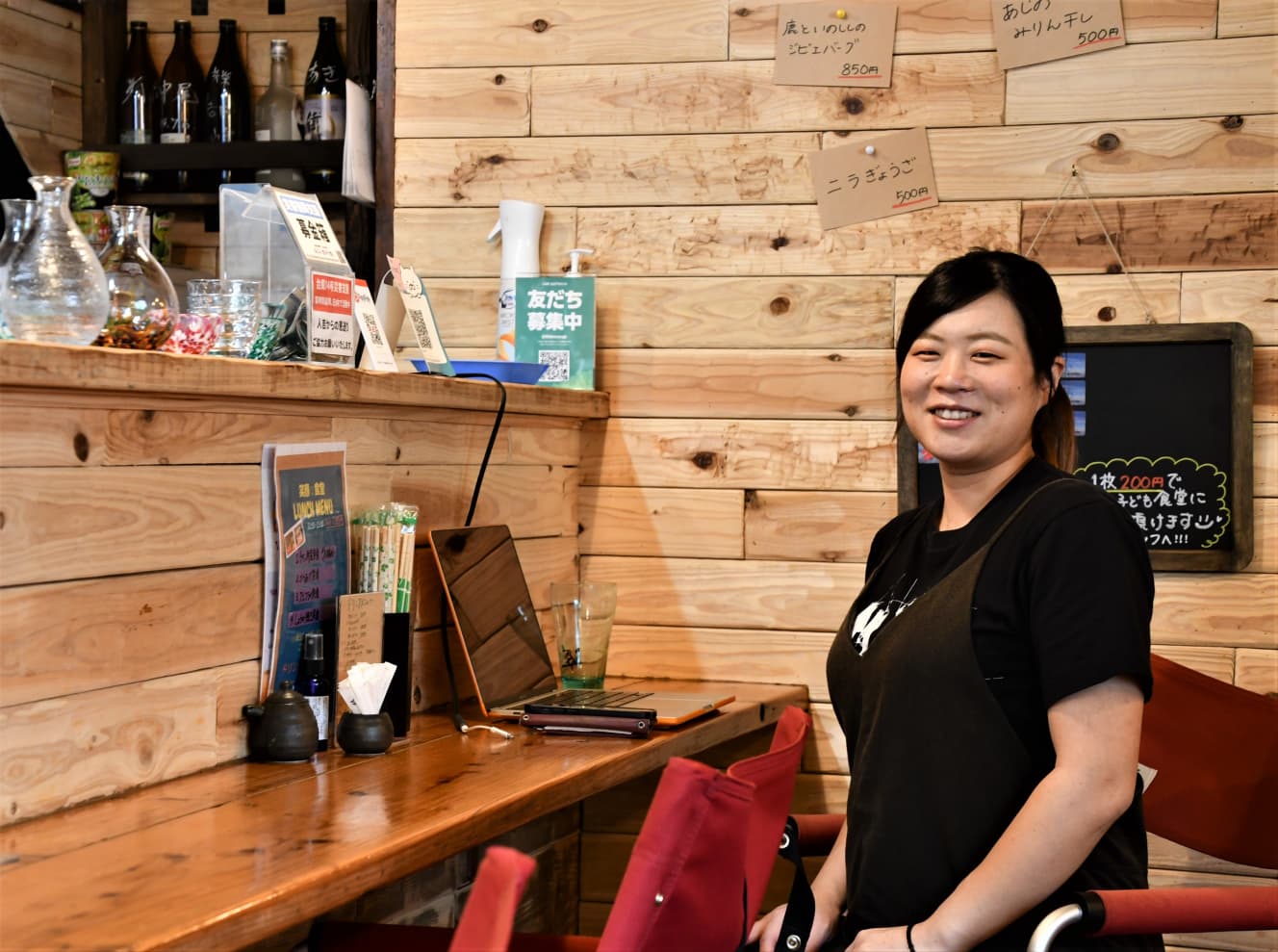
On July 4, 2020, the Kuma River overflowed and the Hitoyoshi/Kuma area suffered tremendous damage as a result of the “Reiwa July 2020 Torrential Rain Disaster” that hit the COVID-19 crisis in Kumamoto. The Hitoyoshi and Kuma areas were severely damaged. It is estimated that 65 people were killed in Kumamoto Prefecture, 50 (77%) of which were killed by the flooding in the Kuma River basin. Two people are also missing. By municipality, Kuma Village had the highest number of victims (25), and Hitoyoshi City also lost 20 people.
About 7,800 houses were damaged in 26 municipalities, and 3,000 households, or one-fifth of all households in Hitoyoshi City, were inundated. Two years have passed since then, and as of June 27 this year, 2,618 people in 1,195 households were living in “deemed temporary housing,” which is temporary housing or private rental housing.
Walking around central Hitoyoshi. While there are signs of recovery, such as the reopening of all long-established ryokan (Japanese-style inns) and the resumption of “Kuma River rafting” on a section of the Kuma River, one of the three rapids in Japan, for the first time in two years, there are still many areas that have been cleared or are still under construction. Still, the local people are making every effort to rise out of the muddy waters, regain their daily lives, and make their town a better place than it was before. Circles of people have formed here and there, and the faces of those who speak of working together for reconstruction are cheerful. What is the driving force behind this?
A diner where everyone can feel at ease.
A diner with an eye-catching yellow door. Slide open the large wooden door, and you will be greeted by the bright smile of Hajika Kobayashi. She opened “Smile Diner” in the center of Hitoyoshi in February of this year.
Hitoyoshi was so comfortable that I fell in love with it,” she said. I liked Hitoyoshi so much that when the volunteer group I belonged to pulled out, I couldn’t bring myself to leave. I didn’t want to leave the people I had become friends with.
Born in Amakusa, Kumamoto Prefecture, he moved to Kumamoto City when he entered university. At university, he studied about local communities. After graduation, he turned his back on the conventional lifestyle of finding a job and worked part-time at a restaurant. Soon after that, there was the Kumamoto earthquake, and he felt he had to do something, so he engaged in volunteer activities. During that activity, I had a chance to help run the “Kumamoto Volters” professional basketball team. So it was only natural for her to be the first one to get involved when she heard that Hitoyoshi had been hit by a major disaster.
I saw the damage that was different from that of the earthquake,” she said. There was mud and garbage everywhere. When the water receded, the smell was terrible. Even so, we set up a base for volunteer groups, communicated with the local government, and worked hard to facilitate activities by acting as an intermediary between the groups and residents. The CSW and the government could only accept volunteers from within the prefecture due to the COVID-19 crisis, but there were about 15 to 20 groups that came, so I acted as a coordinator for them. Residents and volunteers alike had to contend with the mud and heat.
For a full year, we worked hard on restoration activities. As the groups gradually pulled out of the area, Mr. Kobayashi decided that he wanted to stay and do what he could to help with the recovery efforts.
There were people who wanted a place where they could rest their bodies and minds,” he said. So I thought I would simply create a restaurant where anyone could come and feel at ease. I love the restaurant business, and it would also be a place where I could talk with local residents.”
Together with his friends who had been working together, he began preparations. They set a goal of 2 million yen through crowdfunding and achieved it. With the help of Hitoyoshi residents and friends, the interior of the restaurant was renovated by hand. The restaurant will serve lunch and a children’s cafeteria, and will also be a tavern at night. The dreams kept growing, and all of them came true.
We first spoke with Mr. Kobayashi in July of this year. In mid-September, I visited Smile Shokudo again. It was early in the evening, and there was a man at the counter who appeared to be a neighbor, along with two groups of local women filling the tables. He said that sometimes fellow volunteers come to the restaurant.
The man at the counter told me with a smile, “I recommend the chicken nanban,” as I was trying to decide what to order. The restaurant seems to be a place where customers can casually talk with each other, customers with Mr. Kobayashi, and everyone else. Both the chicken nanban and the “Haru-chan salad with plenty of mushrooms,” named after Mr. Kobayashi, were delicious.
Ms. Kobayashi will become a mother next spring. A kids’ room has been built in the back of the restaurant. The room is designed so that children can play safely while their parents can relax and enjoy their meal.
I’m thinking that if I bring my own children here, someone will take care of them,” she said.
If disaster strikes again, the restaurant will serve as a base for volunteers, and its second floor will allow neighbors to temporarily escape the floodwaters.
In collaboration with a craft beer company in Kumamoto City, a new beer using hot spring water from Hitoyoshi’s Ooga Onsen and tea leaves from a long-established teahouse was developed and has been available since mid-October. The name of the beer is “7.4. The brewery is offering a new beer called “7.4” so that people will never forget “that day. The brewery has deep feelings for Hitoyoshi.
Ms. Kobayashi, who is firmly rooted in Hitoyoshi and was called “mom” by her fellow volunteers of the same generation, brings smiles to the people of Hitoyoshi with her generosity and strength of spirit.

Painstakingly produced leaf tobacco buried in muddy water
Leaf tobacco is an agricultural product belonging to the tobacco family of the eggplant family. The large leaves grow to about 70 cm in length and 30 cm in width. Kumamoto is known for having the largest cultivated area in Japan by prefecture, with the Hitoyoshi-Kuma region producing half of the total area in the prefecture. The heavy rain disaster two years ago inundated more than one-third of the cultivated area. Leaves were washed away or drowned in muddy water, and the amount of damage is estimated to be as much as 310 million yen.
Hiroyuki Itsuno, 61, a second-generation leaf tobacco farmer in Hitoyoshi City, has been involved in this work since he was 24 years old. After graduating from high school, he spent four years in the Self-Defense Forces. I had a strong desire to get out of the house rather than take over the farmhouse. He really wanted to stay in the Self-Defense Forces more, but he came back because he is the eldest son.
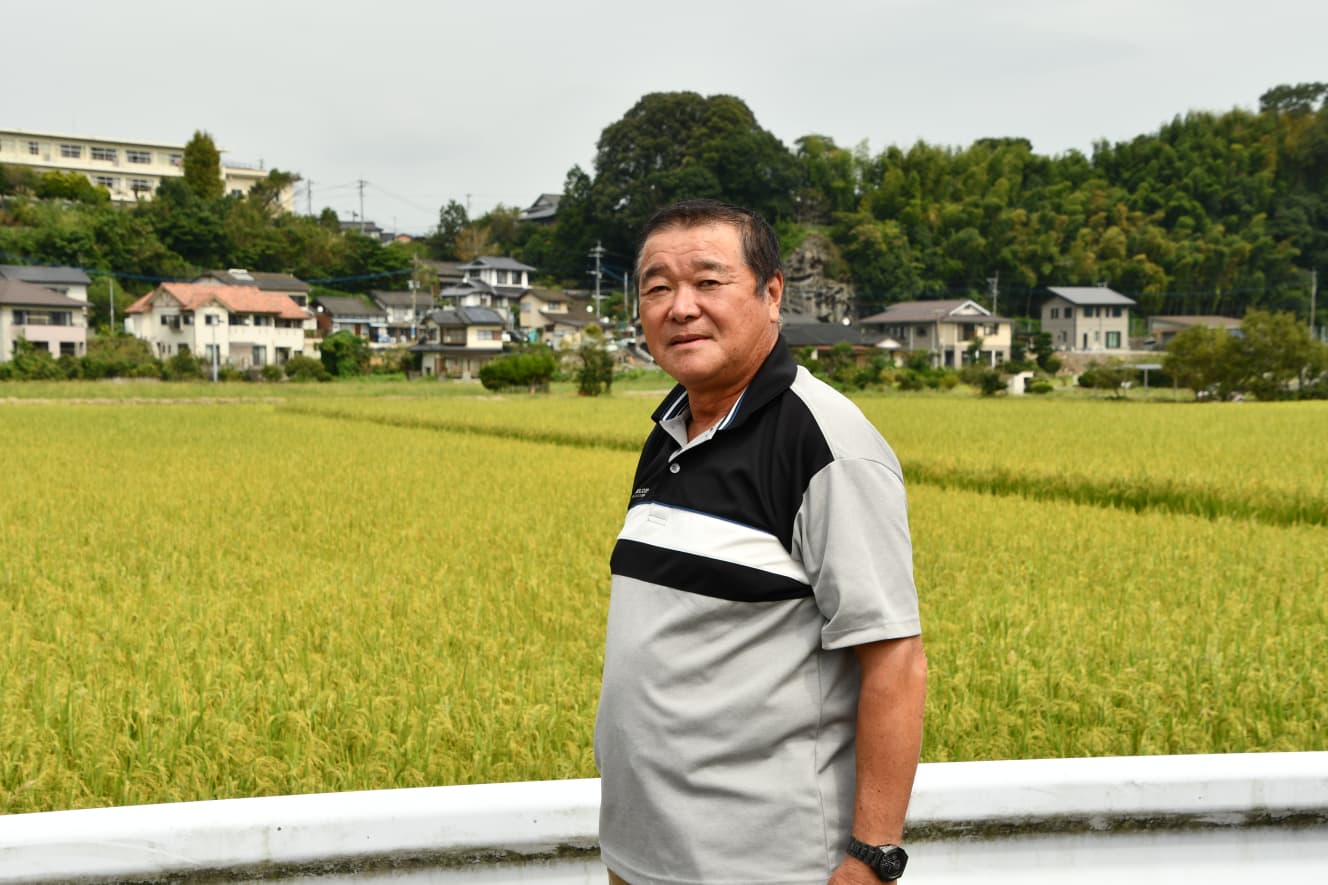
He got married at the age of 26, and since then he and his wife have worked together to grow leaf tobacco and raise their three children. Their daily routine was disrupted on July 4, two years ago. Around 8:00 in the morning, he found that the leaf tobacco in his field had been completely wiped out.
It was just before harvest. The water had come to an unbelievable height. I thought I had produced good leaves because I had good sunlight and good drainage along the Kuma River. I was shocked. I was in the tobacco leaf drying plant at the time. In fact, it was my wife, who had been with me all along, who saw the tobacco leaves flowing down the river. She was traumatized by the sight. On that day, the road was impassable and we could not return to our home. When she finally returned home at 3:00 or 4:00 p.m., her house was also flooded. The whole family worked together to shovel away the mud.
He said he became hopeless about how he was going to make a living in the future.
According to Mr. Izuno, physical strength and experience are the key to producing good leaf tobacco. In December, he prepares the fields (putting in fertilizer and preparing the beds between rice paddies), and in January, he starts sowing seeds and making seedlings. The work of preparing the fields is so important that it is said, “80% of the work is to prepare the beds between rice paddies and 20% of the work is to prepare the seedlings between rice paddies. In March, the seedlings are planted in the field. As the leaf tobacco plants grow, shoots appear, which are manually pinched off to ensure that the leaves are nourished.
I work from morning till night to remove the buds,” he says. Even during Golden Week, when people are talking about 10 holidays in a row, I’m just picking buds. When my children were young, I couldn’t take them anywhere.
It is also important to harvest at the right time, he says. The leaves must not be too young, and of course they must not be too ripe. Rain or shine, you have to harvest when you have to harvest. During this time of the year, while harvesting, they also have to dry the leaves.
We usually start harvesting around 4 a.m. and take the leaves to the communal drying station in the morning. In the afternoon it is hot, so we take a short rest, and then harvest and dry the leaves again in the evening or at night.
Despite the hard work, Mr. Ituno says he loves making leaf tobacco.
It is interesting precisely because it is difficult. No matter how many decades I have been making leaf tobacco, I am still a first-year student every year.
Good leaves are ripe, well-structured, and thick. But for this to happen, the weather must be stable. When it rains a lot, I get nervous,” he says. In the past, we have had hail damage. Drying is done by machine, but if a power outage occurs in the middle of the drying process, everything is thrown away. The drying process, which involves removing water, is not always perfect. Every step of the process requires the utmost care.
In 2020, not even one-third of the previous year’s crop was harvested. The flooded area was not suitable for growing leaf tobacco, so last year and this year he grew fodder rice there. My favorite leaf tobacco production was done in a field near my house.
But due to problems with sunlight and drainage, we couldn’t produce as good leaves as in previous years. The size of the field is also 20% smaller than our previous location. ……
After the flood, seven farmers in Hitoyoshi stopped producing leaf tobacco. Now, in the area where Mr. Ituno lives, 23 farmers continue to grow leaf tobacco in cooperation with each other.
After a series of geological tests at the site of the previous field, we found that the soil is somehow safe, so next year we will take the plunge and plant all the leaf tobacco. So next year, I’m going to take the plunge and try to grow all my leaf tobacco there. It’s kind of a risk, though.”
Mr. Itzuno took us to a field that had been producing good leaves until three years ago. Ears of fodder rice were swaying.
The sky is high and the sun is unobstructed. The wind was blowing pleasantly through the field.
After all, …… I want to grow good leaf tobacco here.
Mr. Itsuno murmured to himself as he looked out over the fields.
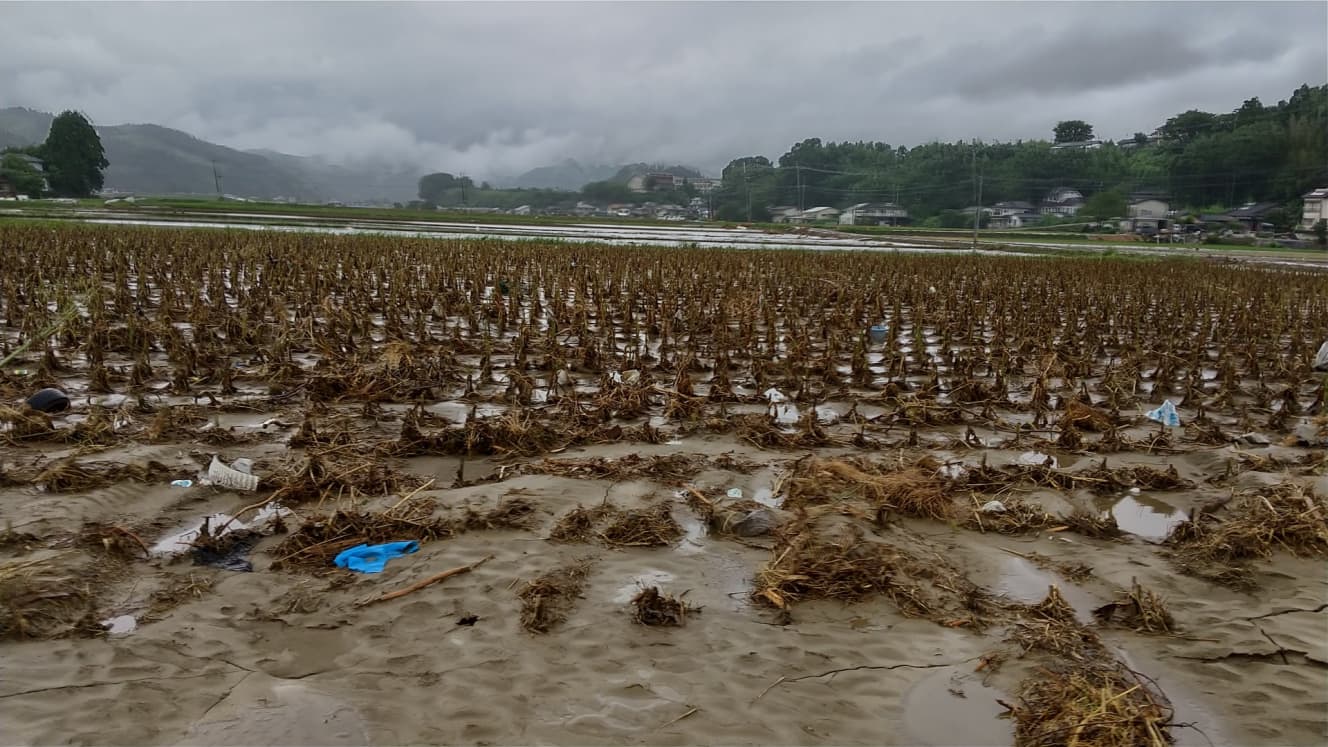
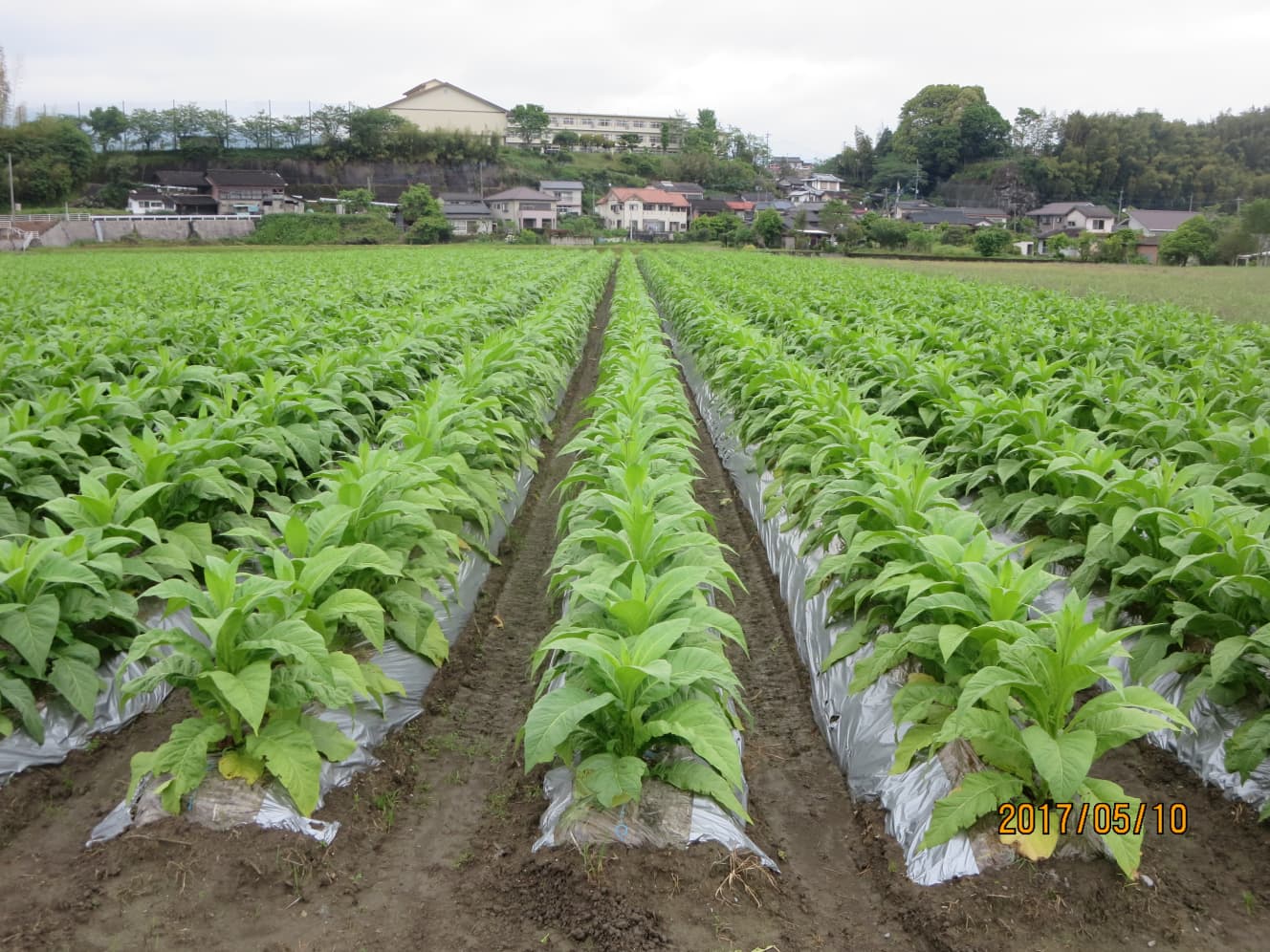
Young Proprietresses See “New Long-established Ryokan
Hitoyoshi has a “Hitoyoshi Onsen Proprietresses’ Association, Sakura-kai,” which was formed in 1994 to promote onsen ryokan and boost tourism in Hitoyoshi and Kuma as a whole. Currently, there are 15 members, including 11 proprietresses and 4 young proprietresses.
One of them is Ms. Tama Takayama, the young proprietress of “Shirasagisou,” which has been in business for over 100 years. All of the buildings of Shirasagiso were flooded, and her house on the property, which she had just built three years earlier, was also flooded.
I can still hear the barking of the dog. My husband picked up the dog and our son and I and our family went up to the roof. That was at 7:30 in the morning. I was prepared to die. It was about 4:00 p.m. when we were rescued by a rafting boat on the Kuma River. It was hard to stay on the roof for so long. Only my son was fine (laughs).
After that, everyone he met told him, “Thank God you are alive,” and “Hang in there,” but to Mr. Takayama, it was as if he was a stranger. Starting with the mud removal, he was busy with the publicly funded demolition of the ryokan and his home, as well as the procedures for rebuilding the ryokan.
One day I came to my senses and wondered what I was doing,” he said. What was I doing, demolishing a house I had worked so hard to build at public expense? I thought, “What am I doing? But then I understood. In times like that, you must not come back to yourself. More to the point, we should not have time to come back to ourselves. Once you become a ‘victim of the disaster,’ you have no choice but to look ahead and keep moving forward.
As a young proprietress of a long-established ryokan, she was determined to do her best. But at the same time, she also realized that she could only do so because her family was alive and well.
After one year, Ms. Takayama went to Hitoyoshi Station. Until then, he had been going to the station at least once a week to greet the SL Hitoyoshi and the sightseeing trains, the Kase and the Masemi, as a member of the Sakura-kai.
The railway bridge has collapsed, so JR trains only run as far as Yatsushiro. The station is no longer a place for people to gather. When I went to the station, I felt deeply that everyday life was gone. The everyday life that I take for granted is no longer the norm. I sincerely felt that I should spend each day with gratitude. I am not the type of person who would say such a thing. Then, on the one-year anniversary of the disaster, when I saw the fireworks display in Hitoyoshi, I thought to myself, ‘Oh, I really did my best,’ and tears naturally came to my eyes.
Takayama says with a sincere smile, “But I couldn’t have done it by myself. It was because of her family, friends, and community members.
She originally worked as a hair and makeup artist in Tokyo. She was busy with advertising and commercial work. One day, an acquaintance introduced her to the fourth president of Shirasagiso, the next president.
We hit it off while we were dating and ended up getting married, but I was like, ‘I know Kumamoto, but where is Hitoyoshi? (laugh). (Laughs.) I never expected to be the proprietress of a Japanese inn. The locals would say to me, “You came from Tokyo? My husband told me that there was really nothing in the area. My husband told me that there was really nothing in the area, but when I arrived, I found that there was a hospital, a supermarket, and most importantly, work. At first I didn’t get used to it, and sometimes I wanted to go back to Tokyo, but I thought that since I had come all this way, I had to make my raison d’etre here. Fortunately, it seems I was adaptable. Some of the young proprietresses came from other places, so I developed a sense of camaraderie.
Hitoyoshi is a very nice place,” she says with great enthusiasm. In the 10 years since she came to Hitoyoshi, she has built a place for herself.
Of course, Tokyo has its advantages, but Hitoyoshi has its own unique advantages. The scenery is great and the food is delicious. Shirasagiso was originally a restaurant, and carp dishes were its specialty. Even today, carp dishes such as carp sarai and koikoku are still our signature dishes. I used to dislike carp dishes because they smelled muddy. But after eating here, my perception changed. The carp is raised in spring water and is cooked to order, so it is very fresh and tasty. River fish such as sweetfish and beans, suppon (soft-shelled turtle), and gibier are our signature dishes.
How to build a ryokan to be rebuilt? That was the challenge for the fourth generation couple. Taking advantage of the opportunity, Ms. Takayama invited her husband to stay at inns around the area.
The disaster was a pinch, but if you look at it the other way around, it was a once-in-a-lifetime opportunity to create a new ryokan,” she thought. I thought so. So we wanted to make the best building we could and provide the best service. To do that, I wanted to look at other ryokans.
Is it appropriate in this day and age to greet guests with three fingers raised just because it is a long-established ryokan? It would be fine to leave the cleaning to machines. For that, people should be able to pay more attention to their guests. However, it is not the best to adapt everything to the modern age. Ms. Takayama discussed each of these issues with her husband, the president, and decided to make drastic changes.
Fortunately, her husband’s parents said they would leave it to you.
They said, “Since this ryokan is located in the rice paddies, it has a wabi-sabi world view, rich in wildness. We invite our guests to forget the hustle and bustle of daily life and enjoy an extraordinary experience. We take care of our guests, but we don’t make them feel like they’re being catered to. In a word, we say, ‘Why don’t you just have fun?
Mr. Takayama laughs with gusto. He is just so cheerful. When you see this smile, all the sorrows of the floating world seem to fly away. The new Shirasagiso is currently under construction and is scheduled to reopen in mid-February next year.
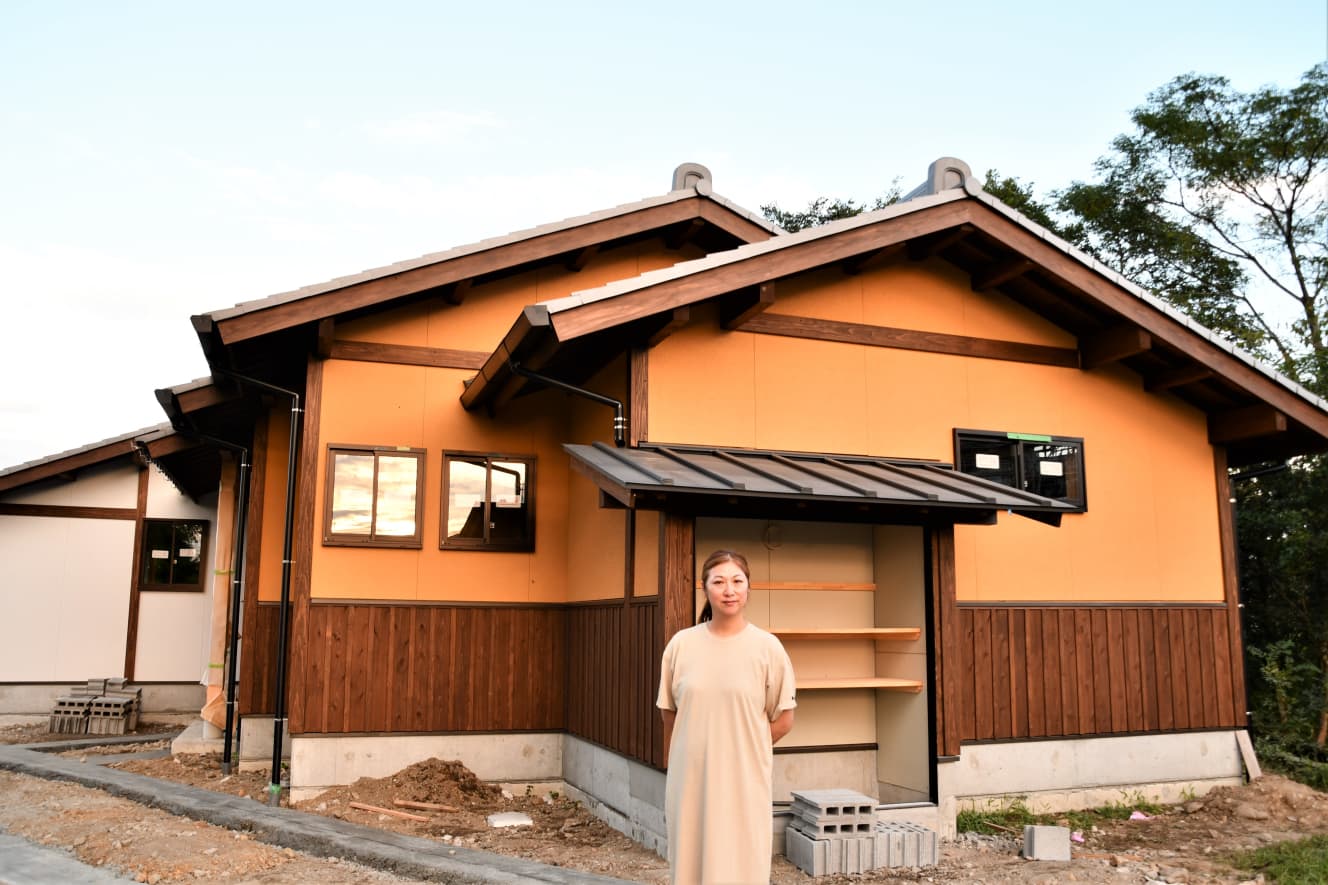
We lost things, and it was hard in terms of time, but if we have life, we can get back on our feet. Because I was prepared to die on that roof buried in muddy water, from now on I want to work to get happy memories, and I want our customers to have happy memories as well. And I want all the people of Hitoyoshi to join hands and make the whole town exciting once again.”
Hitoyoshi has a nostalgic atmosphere even when you visit for the first time. The people of the town, embraced by the Kuma River, are quietly but surely burning energy for reconstruction.
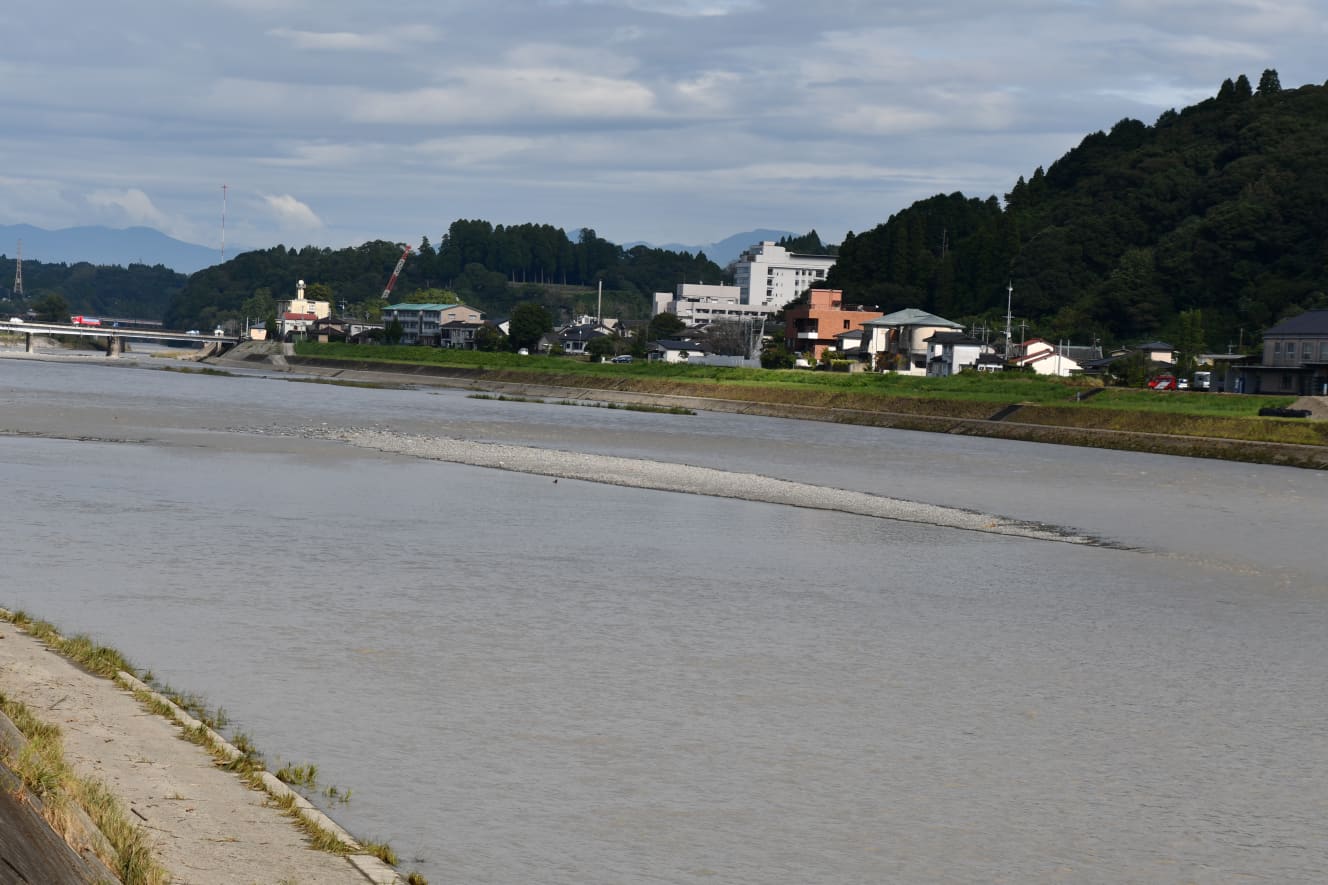

Interview, writing, and photography: Sanae Kameyama